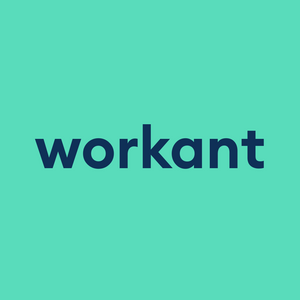What is employee wellbeing, exactly? Employee wellbeing refers to the overall state of an employee’s mental, physical, emotional, and economic health. It’s influenced by factors such as:
- Sense of purpose and meaning
- Organizational support (physical, mental, financial)
- Work-life balance
- Physical comfort and safety
- Autonomy, flexibility, and “job control”
- Sense of job security
- Levels of fairness, equality, and justice in the workplace
- Robustness of social connectivity and network
In a nutshell, this aspect of HR relates to how your job holistically impacts your overarching levels of health, wellness, contentment, and satisfaction.
Keep in mind that “employee wellbeing” is encapsulated by so much more than just physical and mental wellness. This metric does incorporate the basics of quantitative wellness data but is also influenced by qualitative factors and attempts to determine overarching quality of life levels.
Why should I focus closely on this metric?
This aspect of HR is essential. Tracking employee wellbeing allows business owners and HR teams to gauge the satisfaction and wellness of employees through an overarching lens, which provides opportunities for increasing wellbeing and optimizing business outcomes.
Low levels of employee wellness lead to bad performance. A workforce with high average employee wellbeing produces better results, fewer errors, and lower turnover rates.
Simply put, any business has higher productivity levels if its employees are as happy and healthy as possible. Any organization that satisfies and cares for its workforce can attract and retain better talent.
“Good health IS good business.”
– Paul Drechsler, (Chairman & CEO of Wates Group Limited)
The benefits of improving employee wellbeing
- Increased employee engagement, satisfaction, and perception of “job control”, leading to better performance, higher productivity, and more loyalty to employers.
- Higher likelihood of attracting talented workers: According to a Gallup poll, “71% of employees who strongly agree that their organization cares about their wellbeing strongly advocate for their organization as a place to work, compared with only 12% of employees who do not strongly agree.”
- Reduced stress and better employee health across the board, leading to a physically & mentally well workforce with reduced absenteeism rates and optimized output. According to a McKinsey survey, stress costs US employers almost $200 billion annually in healthcare costs.
- Increased retention rates, lowered costs, and enhanced team dynamics
How can I cultivate an organization and work environment that enhances employee wellbeing?
To effectively improve in this area, business owners and HR professionals must adapt to the current global context (link to the future of work post), customize their wellbeing-focused initiatives to their needs and industry, and develop a deep understanding of employee needs, values, and wants.
There are specific ways in which organizations can foster employee wellbeing. Here’s a list of the strategies, along with some corresponding examples.
10 strategies for fostering employee wellbeing
1. Adopt a holistic approach to employee wealth
- Offer financial, physical, mental, and work-life balance benefits ranging from pension plans to gym discounts or implement overarching lifestyle spending accounts.
- Encourage mental health days, walking meetings, and other healthy modifications to workflow practices.
- Provide resources and promote health-education events: invite motivational speakers, host cooking classes, or provide mental health seminars.
- Incorporate fun-focused days such as “bring your pet to work” or “casual Fridays.”
2. Foster healthy team dynamics
- Create team rituals.
- Host off-site retreats.
- Encouraging management to foster positive and open communication.
- Provide mentoring opportunities to bring your team closer, such as a buddy system for new employees, apprenticeships, or ongoing partnerships between senior and junior employees.
3. Focus on developing employee sense of autonomy
- Allow flexible work hours, hybrid work, or fully remote options.
- Give choices regarding benefits.
4. Increase levels of trust
- Grant sabbaticals.
- Allow for employee schedule setting, or even unlimited vacation.
5. Leverage data
- Create surveys and ask for employee feedback.
- Analyze key figures linked to employee wellbeing, (link to metrics blog post) such as employee turnover rates, employee net promoter scores, or other satisfaction/performance metrics.
- Determine the efficacy of programs and pinpoint weaknesses or growth areas (related to wellbeing levels) through data analysis.
- Consistently evaluate the Return on Investment (ROI) of wellbeing-focused programs and initiatives.
- Incorporate more external data (such as historical, industry-wide, or global-trends-related facts and figures) related to employee wellbeing.
- Invest in HR software (link to software post) that automates & streamlines some tedious processes and helps launch your organization into the future (insert link to the future of work post) of wellbeing optimization.
6. Create and maintain continued learning opportunities, or employee talent development programs
The skills gap makes these steps extra important…
- Provide access to general education courses/programs such as language classes or cultural seminars.
- Consider investing in masters or Ph.D. programs for employees.
- Provide access to work-related educational opportunities such as leadership courses, technical-skills programs, or career coaching.
- Host lunch-and-learns with industry experts.
“Reskilling or upskilling employees is no longer a trend but a survival strategy that fuels or sustains a company’s growth.”
- Carol Patton from Human Resource Executive
7. Implement creative initiatives and programs
- Provide childcare.
- Put on fitness challenges, ongoing book clubs, or group field trips.
- Plan after-hours events like movie nights or comedy shows.
8. Enhance employees’ sense of purpose and meaning
- Adopt charity causes and create action teams to work on them.
- Have more one-on-one meetings with employees.
- Host parties and celebrations for holidays and birthdays.
9. Reward high performance
- Focus on incorporating more recognition of positive employee performance.
- Implement a gamification system.
10. Improve your physical space to optimize workflow
- Install standing desks or other ergonomic technologies.
- Get rid of the cubicles, bring in more natural light, and rearrange your office to make it more open and collaborative.
- Enhance aesthetics & functional fun with gaming systems, interior murals, or plants.
- Build experiential spaces such as yoga/meditation rooms or coffee bars.
How intelligent HR software can help
Automating the collection of data streamlines your HR analytics activities and saves time and money. Using technology that helps you determine key wellbeing metrics, identify problems, and establish benchmarks gives you the foundation you need to pinpoint which initiatives and activities are most important and have the most potential for improving your business.
Some software focuses specifically on employee wellbeing, some provide insights into areas that greatly influence wellbeing levels, and others centralize your range of data allowing for simpler analysis and evaluation processes.
Try using a program such as Workant’s comprehensive HR analytics software, which is free for one month.

